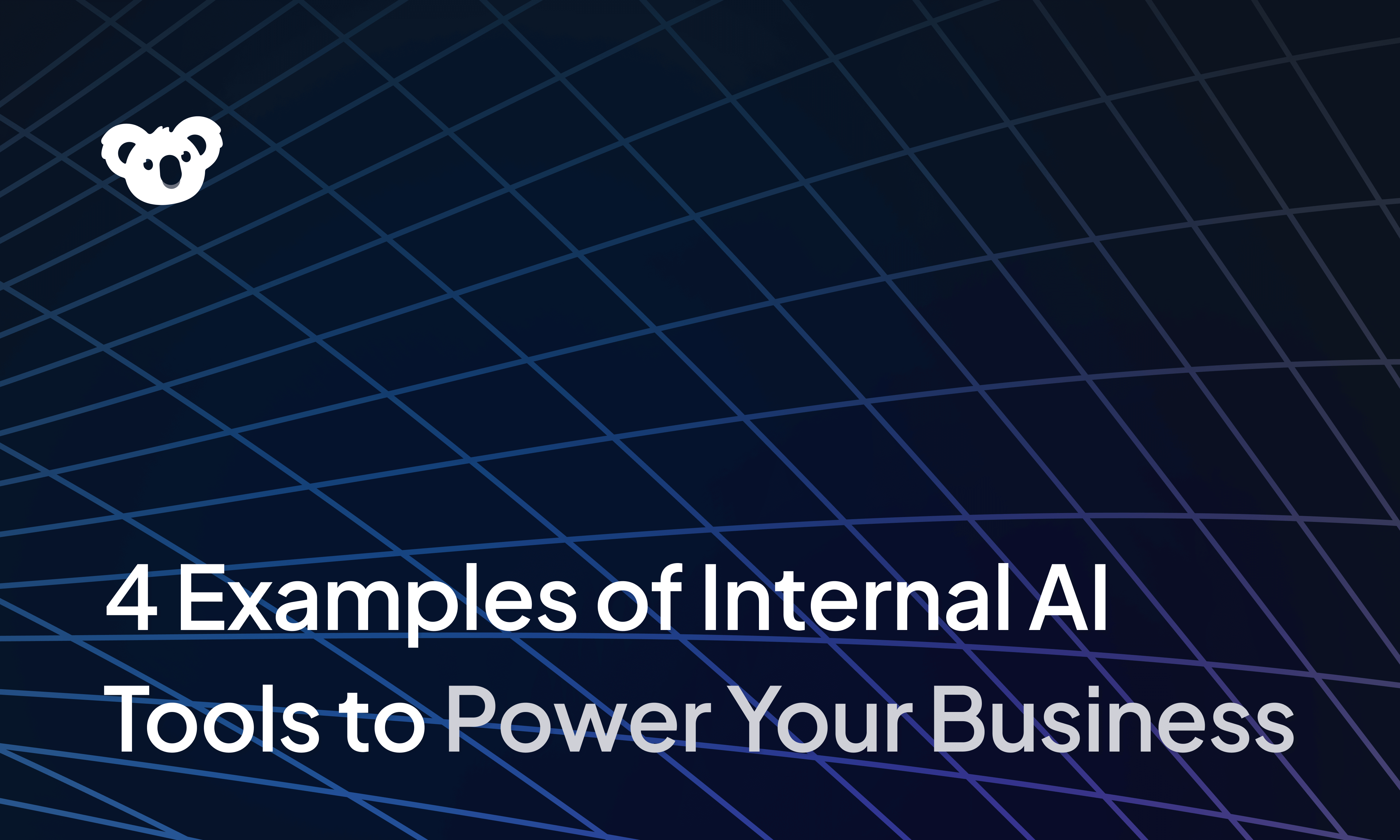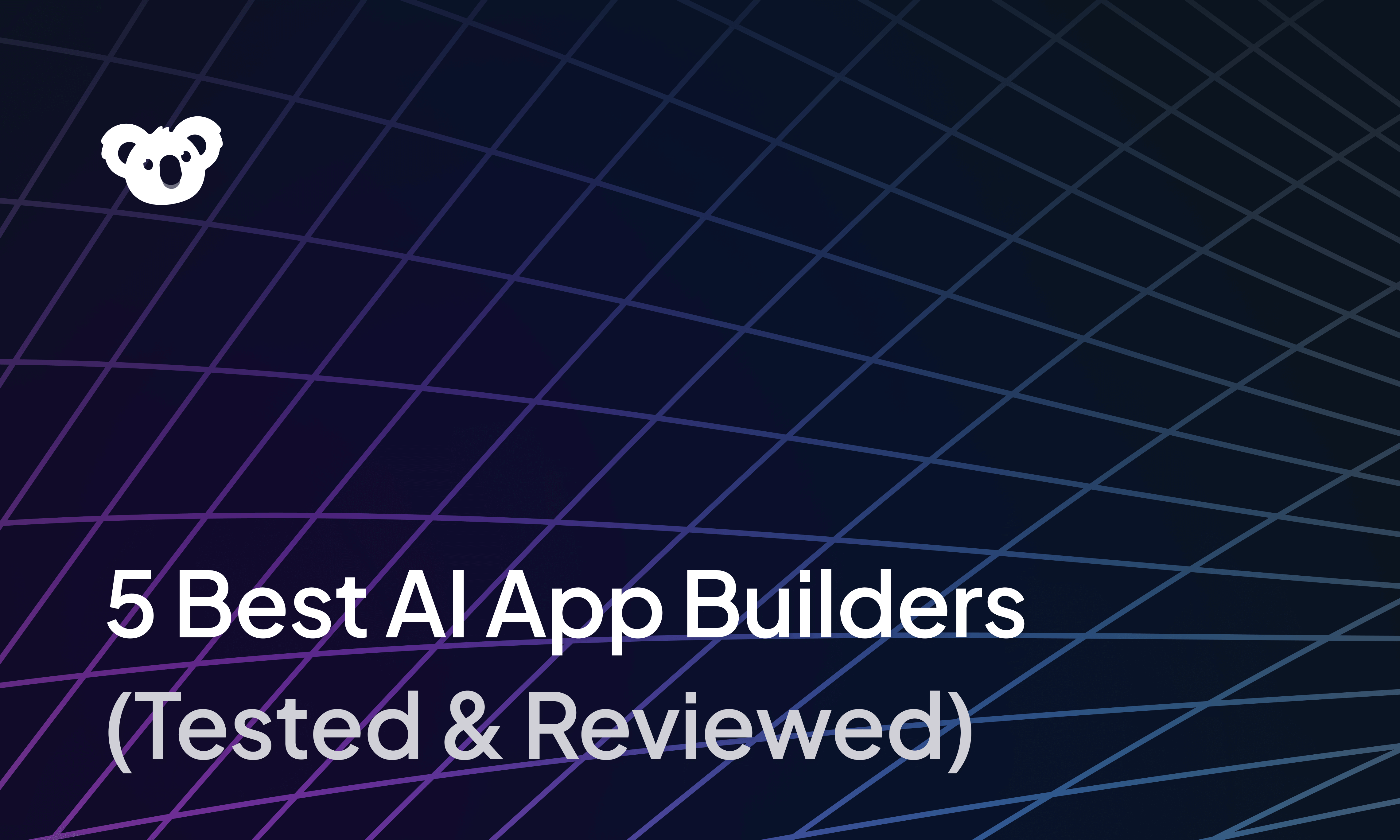


As more organizations adopt a cloud-first strategy, getting data to flow between apps is critical. Cloud data integration is what makes that possible, so teams can automate processes, power analytics, and make informed decisions.
In this article, we’ll cover:
- The fundamentals of cloud data integration
- Benefits and challenges associated with it
- Key tools and platforms facilitating integration
Let’s start by defining cloud data integration.
What is cloud data integration?
Cloud data integration is the process of connecting and merging data from different sources into a unified view hosted on a cloud-based infrastructure. Think of it as building bridges between your apps and systems, so data can flow smoothly and be used wherever it’s needed, without manual copying or syncing.
It’s faster, more scalable, and easier to manage than traditional data integration that relies on on-premises solutions.
Why does cloud data integration matter?
Cloud data integration matters because it gives you a cohesive and useful 360° view of the data available in your business. When every team relies on different cloud tools, each system holds part of the picture, but none offers the full story. Without integration, this disconnect leads to:
- Disjointed customer experiences
- Inconsistent or conflicting reports
- Delayed decisions
- Duplicate or stale data
For example, let’s say you're onboarding new customers. Without integration:
- Your ops team manually enters customer info into billing, CRM, and support tools
- Someone forgets a step in the onboarding process, and it causes delays or errors
With integration:
- When a customer signs a contract, their info auto-syncs across tools
- A support ticket is created, a Slack alert goes out, and a billing profile is set up
Cloud data integration makes that possible because it connects the logic between systems, not just the data.
How does cloud data integration work?
Cloud data integration works by moving data from various cloud-based systems into a single, central location where it can be effectively utilized.
These source systems might include:
- Salesforce (CRM)
- Stripe (payments)
- Google Sheets (spreadsheets)
- Shopify (eCommerce)
- PostgreSQL (cloud databases)
To connect to them, integration tools use APIs, which act like doorways that let the tool ask for specific data, for example, “give me all the customers created today.”
In some cases, the data doesn’t need to be pulled on a schedule. Instead, the source system sends updates automatically using webhooks. When something changes, such as a new order or a support ticket, it is pushed into your pipeline in real-time.
Once the data is extracted, it’s usually not ready to go. It needs to be cleaned up:
- Fixing inconsistent formats (like date/time or currency)
- Merging duplicates
- Mapping field names into something your team understands
This cleanup happens during a transformation step, which can be done in one of two ways:
- ETL (Extract, Transform, Load): Clean the data before loading it into storage
- ELT (Extract, Load, Transform): Load raw data first, then clean it inside the data warehouse
After transformation, the data is loaded into its destination. This is usually a central data warehouse, but it could also be:
- A data lake for archiving
- A business tool (like pushing scores into HubSpot via reverse ETL)
- A dashboard or reporting tool
All of this is automated, monitored, and governed in the background. You receive alerts if a process fails, logs for audits, and tools to manage access permissions.
Key benefits of cloud data integration
When done well, cloud data integration enables teams to operate with greater clarity. Here are some of the most valuable benefits modern businesses gain:
- Unified data view: A core challenge in any digital integration strategy is unifying data across cloud tools, teams, and workflows. Cloud data integration solves this by consolidating fragmented systems into a single, trusted data layer. Instead of switching between platforms to understand customer behavior or operational performance, teams get one place to find what they need.
- Real-time or near-real-time insights: When integration is done right, you’re not waiting days for data exports. You can build live dashboards, get instant alerts, and make decisions based on what’s happening now.
- Better customer experiences: When your systems are connected, teams can act with context. Support sees the full customer history. Marketing targets the right users at the right time. Product understands how people actually use the app. Integration makes those insights possible and more actionable.
- Accessibility: Once integrated, data becomes more accessible to teams across the organization. Whether accessed through a data warehouse, BI tool, or embedded in operational systems, users can work with consistent, up-to-date information.
- Speed of deployment: Cloud data integration tools can go live in days or even hours, thanks to prebuilt connectors, managed infrastructure, and low-code or no-code setup options.
What are the most common challenges of cloud-based integration?
Even with modern APIs and iPaaS tools, stitching together systems comes with hidden friction. Below are some of the most common challenges teams run into
- Data silos: Not every system is integration-friendly. Some tools have limited APIs, inconsistent data models, or strict rate limits, making it difficult to extract data cleanly.
- Schema drift and changing structures: APIs evolve. Fields get renamed, new columns appear, and data types shift without warning. These silent changes can break your pipelines or introduce inconsistencies, especially if you’re not actively monitoring for schema updates or applying version control.
- Security concerns: Moving sensitive data between cloud systems always carries risk. You have to protect it in transit, control who can access it, and keep a clear record of every action. Compliance matters too, especially with standards like GDPR or HIPAA.
- Monitoring and maintenance load: Even if the initial setup is smooth, maintaining integrations over time takes effort. You’ll need to monitor for failed syncs, refresh expired credentials, keep up with API changes, and resolve pipeline drift.
- Complexity of connectors: Prebuilt connectors aren’t always simple to work with. Some need extra configuration, custom fields, or workaround logic to handle edge cases. And if you’re working with less common systems, you might end up building your own connectors, which is often a technical and time-consuming process.
- Latency and performance issues: API-based syncs can be slow, especially when rate limits get in the way. Large data jobs might overload systems or cause lag in dashboards and reports. Moreover, if you require real-time delivery, batch pipelines won’t suffice. You’ll need an architecture built for streaming or event-driven data instead.
What to look for in a cloud integration platform
When evaluating tools, look for platforms that directly address the challenges above. At a minimum, you’ll want:
- Resilient connectors with support for API versioning, retries, and schema management.
- Transformation and data quality features built into the pipeline.
- Real-time and batch support, so you can handle both high-frequency syncs and large jobs.
- Granular security controls, including RBAC, audit logging, and encryption by default.
- Monitoring and observability tools ensure your team receives alerts before issues arise.
- Scalable infrastructure that can grow with your data volume and complexity.
What are the top cloud integration platforms?
Your ideal tool depends on your use case, team's skillset, and the complexity of your data environment.
Below are some of the most widely used data integration services:
Superblocks
Superblocks is an enterprise app development platform for building internal software fast and securely. It offers built-in tools for connecting cloud data and services. It’s also designed for teams that want the efficiency of low-code, with the freedom to go full-code whenever needed.
Informatica
Informatica is a mature platform known for its broad integration and data governance capabilities. It supports ETL/ELT, data cataloging, quality enforcement, and metadata management.
It’s trusted by large enterprises with heavy compliance and governance requirements. However, it’s expensive and complex to implement. It can also be overkill for smaller teams
Segment
Segment is a customer data platform focused on event-based integration. It captures behavioral data from apps and websites and routes it to marketing, analytics, and warehouse destinations.
It's mainly used by growth, product, and data teams who need clean, real-time behavioral data across customer touchpoints. Segment is not a general-purpose ETL and has limited transformation capabilities.
Google Cloud Dataflow / BigQuery Data Transfer Service
These are Google’s native stack for building pipelines and importing data into BigQuery. Dataflow supports batch and streaming use cases. BigQuery’s Transfer Service automates imports from various sources, including Google-owned platforms and external data providers like Amazon S3.
These tools are a natural choice for engineering and data teams already invested in the Google Cloud ecosystem. They are less suitable for cross-cloud or non-Google environments.
Talend Cloud
Talend is a cloud-native integration platform with strong data quality, governance, and transformation features. It provides a visual designer for building pipelines as well as tools for profiling, cleansing, and monitoring data in motion.
It’s a good fit for data teams that care about both integration and quality assurance. However, its UI can feel clunky and dated. Licensing is also complex because pricing depends on a mix of users, workloads, features, and deployment model, and many features are tiered or add-ons.
Best practices for cloud data integration
It’s one thing to connect systems, it’s another to do it well. To build integrations that are reliable and easy to maintain, follow the following best practices:
Define objectives before you start
Avoid the trap of integrating just for the sake of it. Start by identifying what you want to achieve. Are you powering real-time dashboards? Automating operational workflows? Feeding machine learning models? Clear goals shape every decision that follows — from which tools you use to how you design your data flows.
Standardize schemas and naming conventions
Inconsistent field names, data types, and formats become a nightmare once multiple systems or teams are involved. Define naming conventions, schema standards, and data contracts early in the process. This creates consistency across sources, simplifies downstream queries, and facilitates the onboarding of new stakeholders or tools.
Monitor performance and errors proactively
It’s not enough to know that a dashboard failed. You need to know why, and ideally, before a user tells you. Set up proactive monitoring, including pipeline health dashboards, error logging, and alerts for latency, schema drift, or failed syncs.
Maintain documentation and audit logs
Every connector, API call, transformation, and schedule should be documented. Who owns it? What data does it touch? What’s its purpose? Clear documentation helps teams troubleshoot faster. Paired with audit logs, it also provides the traceability required for compliance and governance.
How Superblocks manages data integration
Superblocks is not a traditional ETL tool or a drag-and-drop integration platform. However, it supports ETL- and ELT-style workflows for moving and transforming data between cloud systems without needing to write pipelines from scratch. You can connect to APIs and databases, run queries, and schedule jobs without duct-taping together multiple tools or scripts.
Teams use Superblocks to:
- Build internal apps that pull from multiple data sources
- Automate backend workflows (e.g., onboarding, approvals, escalations)
- Schedule jobs that move and sync data between systems
- Monitor and trigger updates across APIs, warehouses, and operational tools
Our comprehensive set of features powers this functionality:
- Multimodal app building: Start with AI to scaffold apps, then refine using the visual builder or raw code. This democratizes development, so data teams can build without depending on engineering for every change.
- It connects to almost anything with an API: Superblocks integrates with nearly any data source via APIs. It includes 50+ prebuilt connectors for cloud databases, warehouses, file storage, and SaaS tools. You can pull, manipulate, and push data within the same platform.
- It puts integration directly into the app-building process: Whether you're building a dashboard, a CRUD tool, or a multi-step workflow, integration is built in. Chain API calls, fetch data from multiple sources, write business logic in JavaScript or Python, and pass variables across steps.
- It works in cloud or hybrid environments: You can run Superblocks fully in the cloud or use its on-premise agent to connect to private databases or internal APIs securely.
- It centralizes governance and compliance: Superblocks comes with enterprise-grade features like RBAC, audit logs, and SSO, so your integrations are secure and traceable.
- Incredibly simple observability: Push logs, traces, and metrics from your internal tools into platforms like Datadog, New Relic, or Splunk with minimal setup, so you’re not flying blind when something breaks.
- Git-based source control: Develop and collaborate confidently with a Git-based workflow. Build on feature branches, review changes in GitHub or GitLab, and deploy with one click.
- Real-time data streaming: You can power workflows that react to live data as it arrives. This is ideal for alerts, event-driven updates, or synchronizing high-frequency systems.
Want to see how Superblocks can help your business? Explore our Quickstart Guide or try it for free.
Frequently asked questions
What is cloud data integration?
Data integration in the cloud refers to connecting data across different cloud-based systems so that it can move freely between tools. It keeps information in sync and makes it easier to power reporting, automation, and real-time decision-making.
What’s the difference between cloud and on-prem integration?
Cloud integration connects systems that reside in the cloud, such as Salesforce, Stripe, or BigQuery. On-premises integration connects systems hosted locally or behind firewalls, such as internal databases or legacy applications.
How does Superblocks connect to external data?
Superblocks supports direct connections to REST and GraphQL APIs, cloud databases, SaaS tools, and data warehouses. You can query, transform, and push data from inside your apps or workflows using JavaScript, Python, or visual tools.
Is cloud integration secure?
Yes, if implemented correctly with the right tools. Superblocks encrypts all data in transit and at rest, supports RBAC, SSO, and audit logs, and enables you to isolate sensitive systems with its on-premises agent. You can also manage secrets, control access per environment, and track every query that runs
Can I integrate legacy systems with cloud apps?
You can if you have a way to access the legacy system. This is usually through a database connection, file export, or internal API.
Do I need a data warehouse to integrate cloud tools?
Not always. If your goal is analytics or centralized reporting, a data warehouse like Snowflake or BigQuery can help. However, if you're building operational tools, such as automations, dashboards, or internal apps, you can integrate cloud systems directly without routing them through a warehouse. Superblocks supports both approaches.
Is low-code integration viable for engineering teams?
Yes. Superblocks, for instance, gives engineers full control. You can use Clark AI or the visual editor for speed, and drop into full JavaScript or Python whenever needed. It’s designed to augment your workflow, not limit it. You get speed without sacrificing flexibility or best practices, such as version control and automated testing.
Stay tuned for updates
Get the latest Superblocks news and internal tooling market insights.
You've successfully signed up
Request early access
Step 1 of 2
Request early access
Step 2 of 2
You’ve been added to the waitlist!
Book a demo to skip the waitlist
Thank you for your interest!
A member of our team will be in touch soon to schedule a demo.
Table of Contents



.png)


